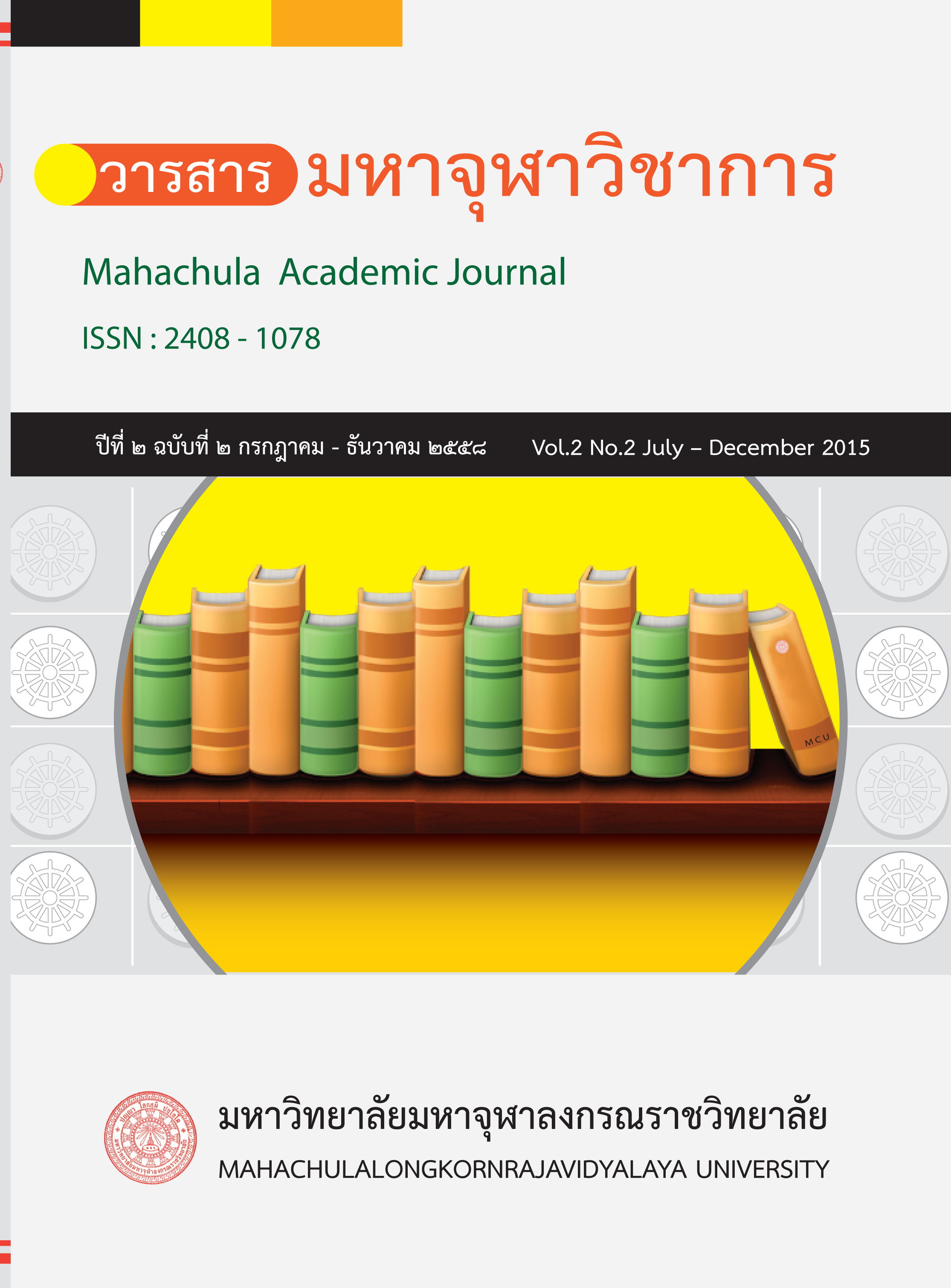Tipitaka must study ; Atthakatha must search
Main Article Content
Abstract
The Pali Tipitaka is the guiding principle for the Four Assemblies. The Buddha’s word has been complied in the Pali Tipitaka which operates the duty of the Dhamma. It is through the Pali Tipitaka that we can get the Dhamma and Vinaya. We have to learn the Pali Tipitaka as the directive principle and also the basis for the practice of Buddhism.
The Atthakatha is the subsequent scriptures which expound on the Pali Tipitaka. The commentaries have given the needed explanation in clarity by giving more details and descriptive meaning. We learn the Pali Tipitaka as it should be preserved in its original state, while we trace the Atthakatha as it should aid our understanding the background stories related to the word of the Buddha.
Article Details
References
พระพรหมคุณาภรณ์ (ป. อ. ปยุตฺโต). จารึกอโศก รัฐศาสตร์แห่งธรรมาธิปไตย. กรุงเทพมหานคร: สำนักพิมพ์ผลิธัมม์, ๒๕๕๒.
มหาจุฬาลงกรณราชวิทยาลัย. พระไตรปิฎกภาษาบาลี ฉบับมหาจุฬาเตปิฏกํ ๒๕๐๐. กรุงเทพมหานคร: โรงพิมพ์มหาจุฬาลงกรณราชวิทยาลัย, ม.ป.ป.
มหาจุฬาลงกรณราชวิทยาลัย. อรรถกถาภาษาบาลี ฉบับมหาจุฬาอฏฺฐกถา. กรุงเทพมหานคร: โรงพิมพ์มหาจุฬาลงกรณราชวิทยาลัย, โรงพิมพ์วิญญาณ, ๒๕๓๒ - ๒๕๓๔.
K. Warder A. K., Indian Buddhism 3rd. Varanasi : Motilal Banarasidass, 1990.
D. K. Barua, An Analytical Study of Four Nikayas 2nd. Delhi : Munshiram Manoharlal, 2010.
Hirakawa Akira, A History of Indian Buddhism From Sakymuni to Early Mahayana 3rd. Varanasi: Motilal Banarasidass, 1990.


